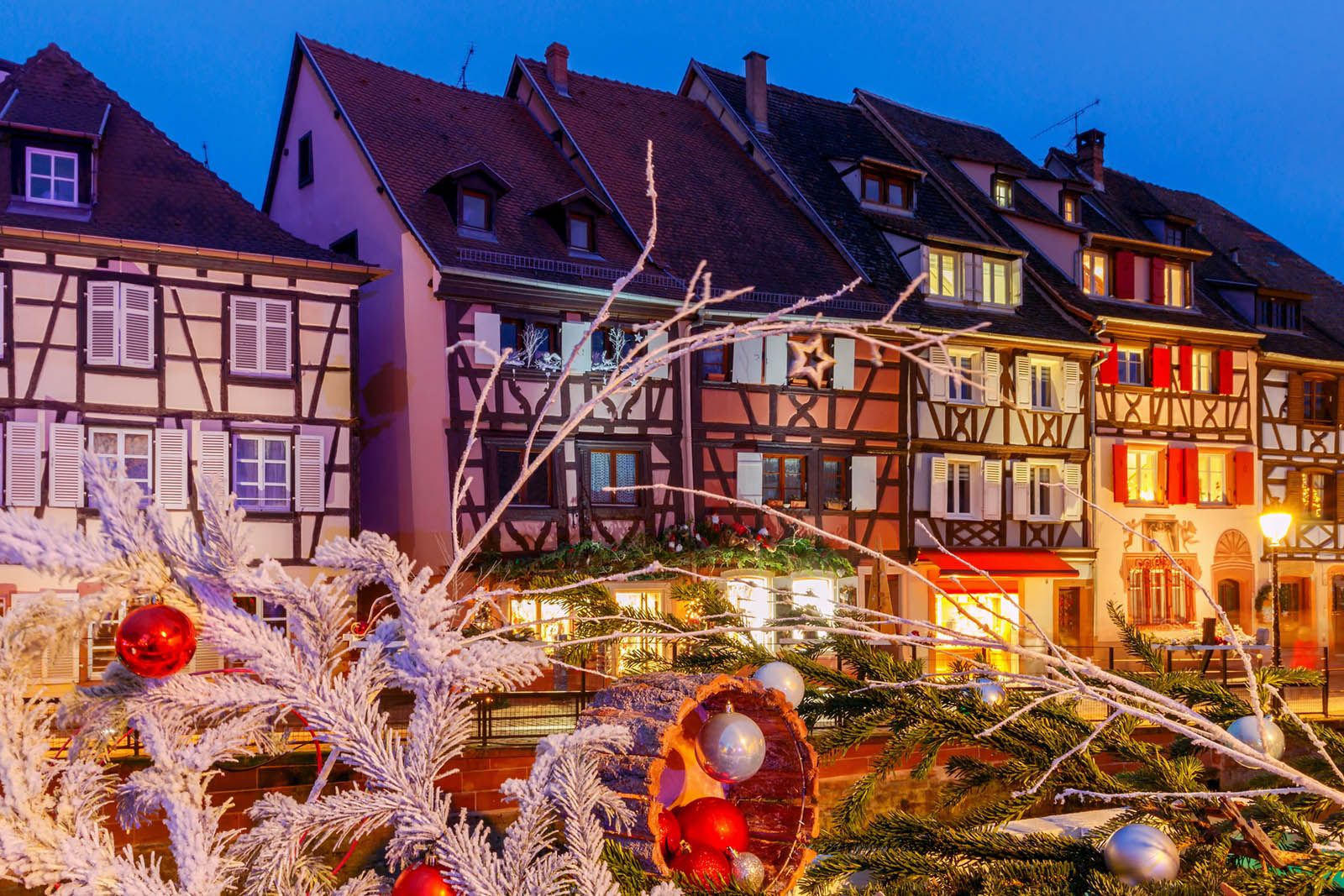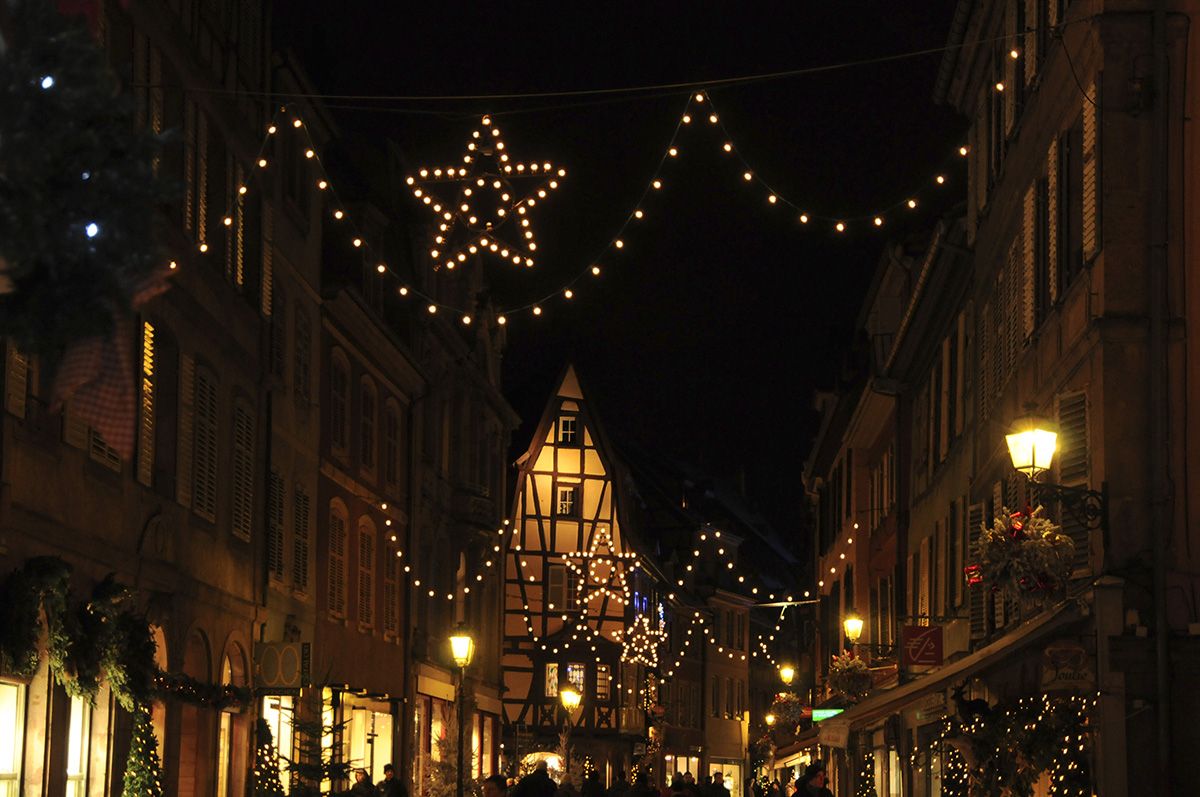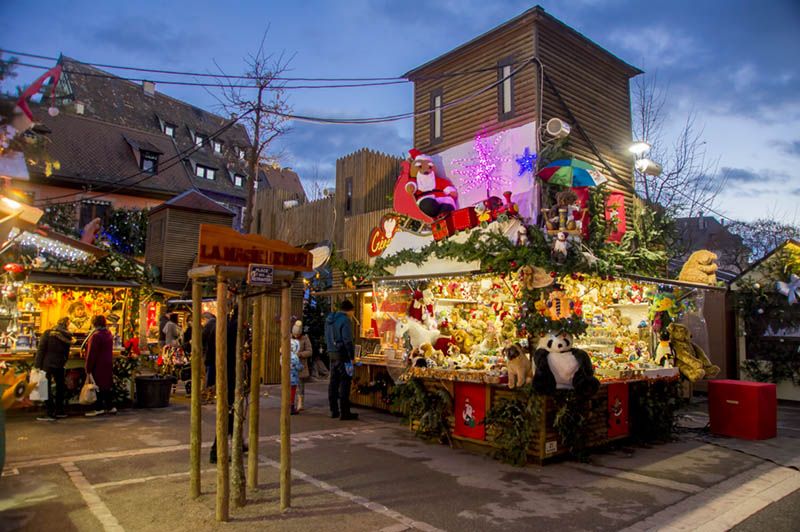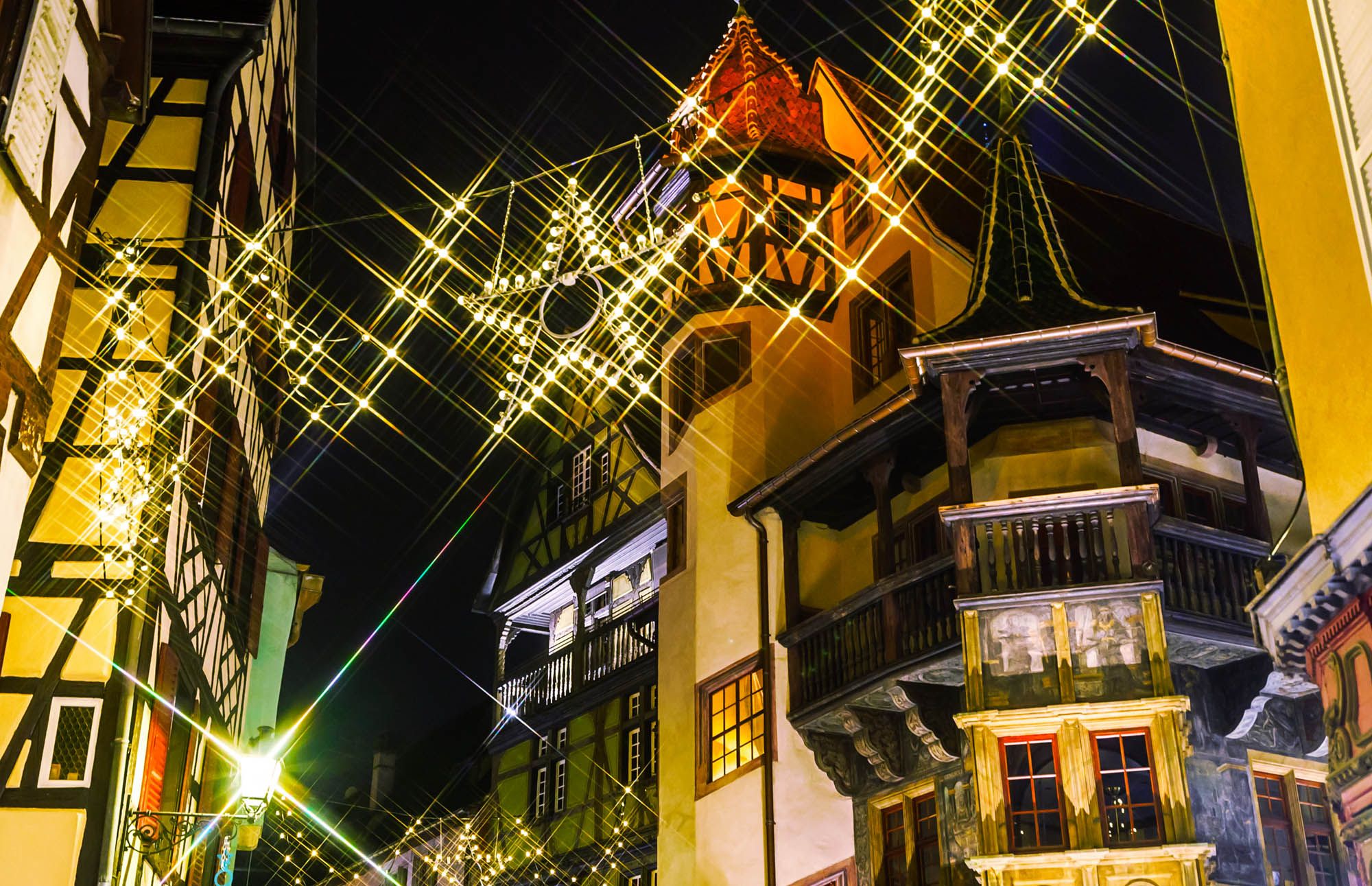Culinary and gastronomic specialities
Alsatian crafts & Christmas treats
Irresistibly drawn to the good things in life, Alsace is a land of traditions where recipes are passed down from generation to generation. In the centre of this generous region, Colmar happily combines the values of hospitality and know-how.
With its local artisans, wine producers, sweet or savoury culinary specialities, traditional brasseries and award-winning restaurants, the capital of Alsace Wine Country loves the good things in life but, more than that, loves to share them …
The five Christmas Markets feature local producers of foie gras, cheese, cold meats, honey, gingerbread, cakes and other gourmet delights. There will be something to suit all tastes! And make sure you enjoy the specialities that are only available during Advent because you'll have to wait a year before you'll have another chance ….
Colmar,
gastronome city
Colmar, the capital of the Alsace wine area, fills visitors with wonder and with its architectural treasures and its age-old tradition of hospitality and gourmet dishes. Fine wines and great vintages wines, delicate and flavor of traditional recipes cooking by great chefs…
Colmar did not fail in the tradition that makes of Alsace a gastronome region. We’ll mention just a few classic specialities: foie gras (created in Strasbourg in 1780), “baeckaoffe” (a dish composed of three types of marinated meat and potatoes in white wine), the inevitable “choucroute”, the “matelote du Rhin” fish dish, le “coq au Riesling” chicken in wine, “pain d’épices” (similar to gingerbread) and “Kougelhopf” (sweet, bun-like specialtiy with raisins macerated in kirsch), and Munster cheese.
Alsace has a real historic, cultural and gastronomic capital which makes of this region a favourite destination! During the Christmas time the local products are often cooked: foies gras, wines of Alsace, Christmas beer, brandy … The Alsatian’s Christmas speciality of the most known is mulled wine.
Some Christmas specialties :
Alsatian’s Christmas spices
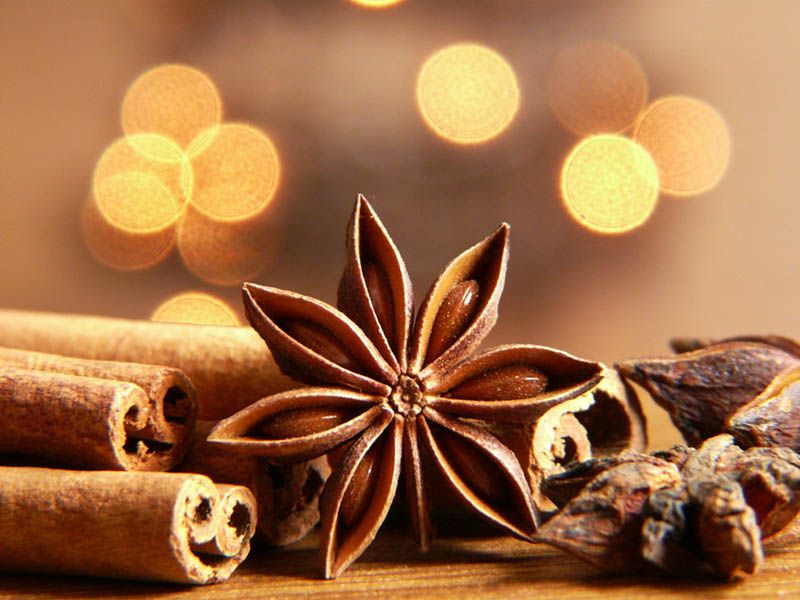
- Anise perfumes two varieties of typically Alsatian biscuits and flavours the hot wine.
- Cinnamon, one of the oldest spices, is used grounded in gingerbread. It also flavours the hot wine.
- Cloves are usually used in gingerbread and hot wine. Formerly, people fixed cloves on oranges and hung them to the Christmas tree.
Mulled Wine
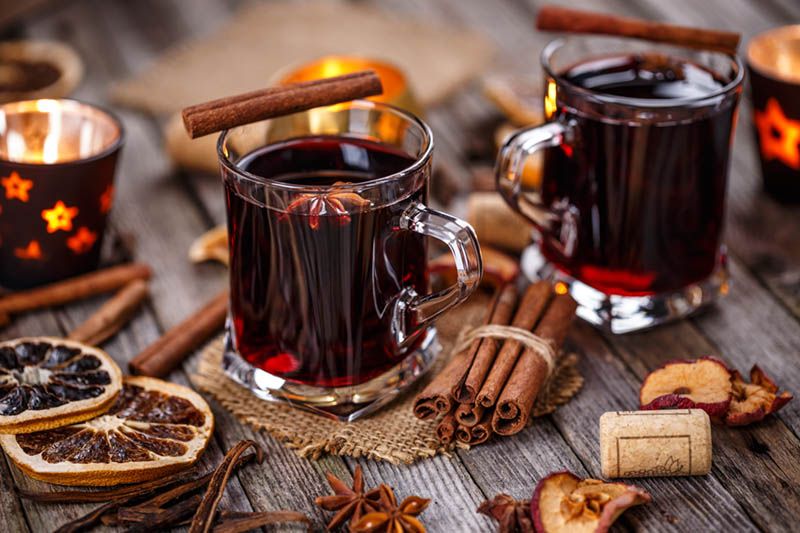
As winter approaches, Alsace mulled wine is an essential "ritual". White wine or Pinot noir is warmed without coming to boiling point, and flavoured with spices (clove, cinnamon, star anise), lemon and orange and finished with a spoonful of honey before drinking.
The Colmar Christmas markets will have several non-alcoholic "variants" on offer: mulled apple juice, orange juice and strawberry juice.
Gingerbread (Pain d'épices)
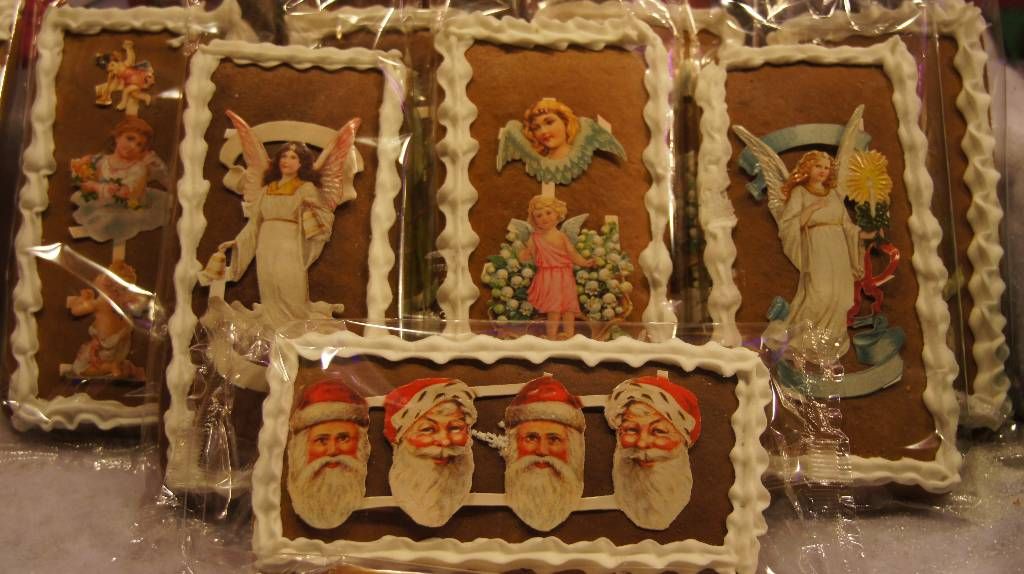
A large variety of gingerbreads exist in Alsace; these are manufactured according to the traditional recipes of yesteryear: gingerbread tongues glazed with icing sugar or chocolate and decorated with a traditional Christmas image, tender gingerbread with local honey or gingerbread filled with chocolate, or almond cream.
It is a tradition in Alsace to decorate Christmas trees with gingerbread.
Sprengerle
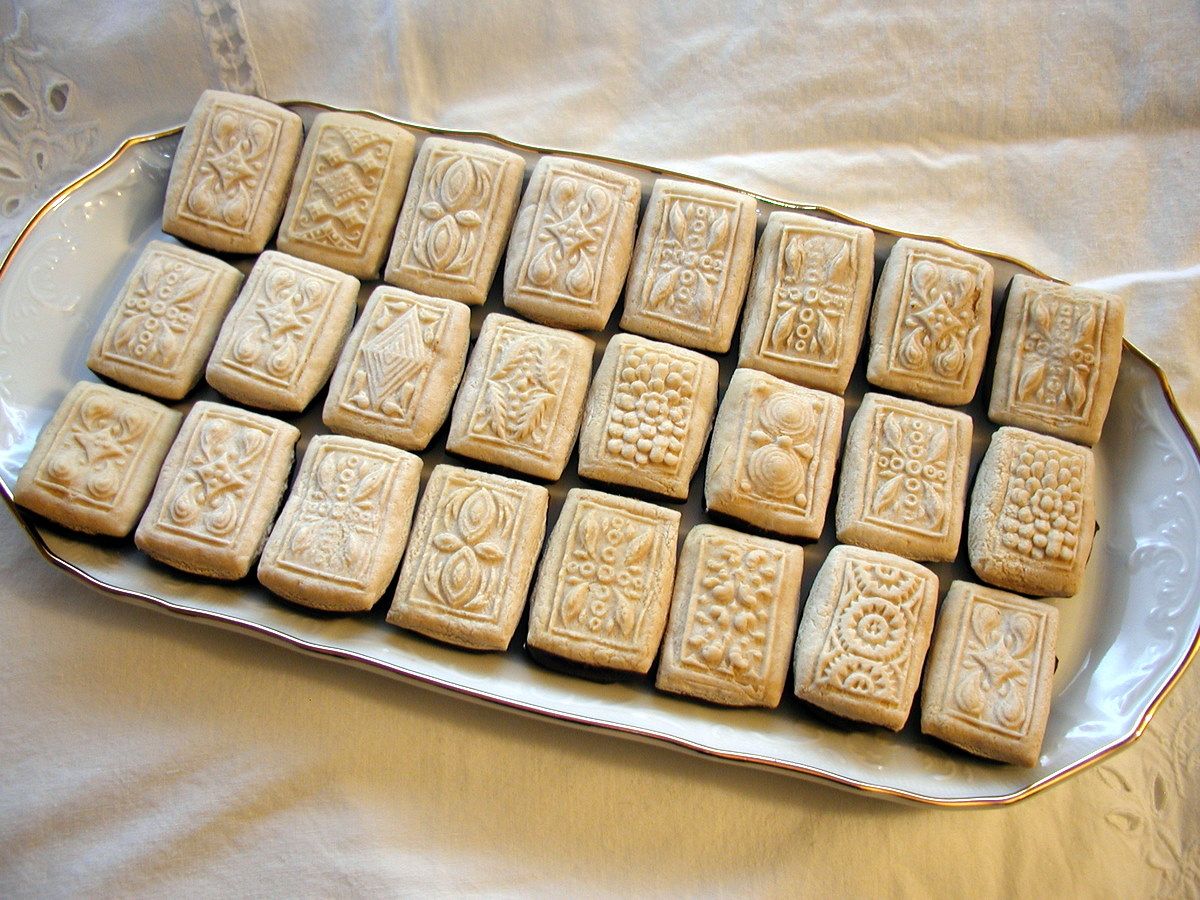
Antique moulds are currently very sought after by collectors ...
Bredele
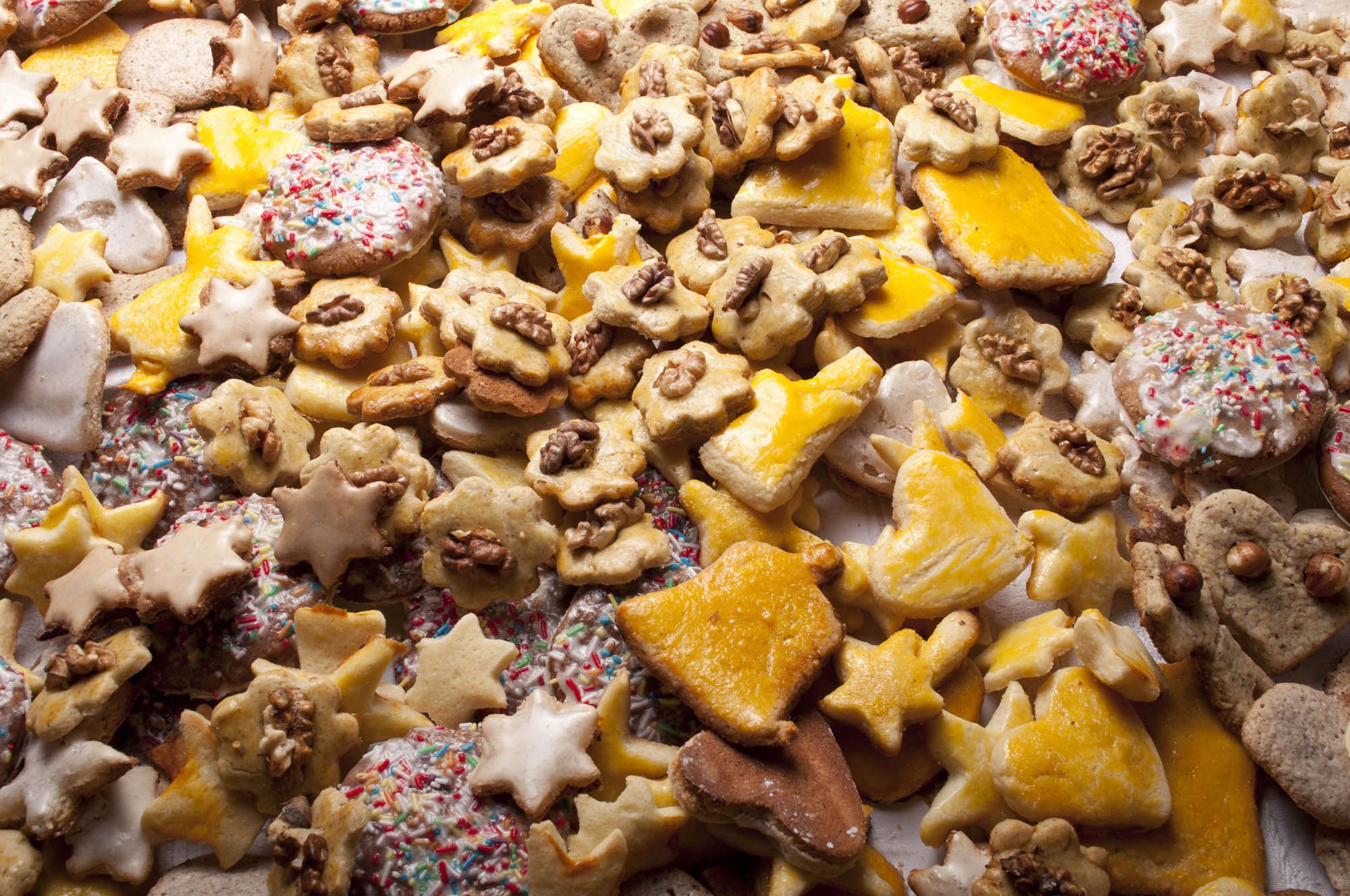
A veritable rite for the Alsatian identity, the confection of these little, variously shaped Christmas biscuits is specific to the Festive Season.
There are several dozen varieties in various flavours: cinnamon, vanilla, chocolate, almond, hazelnut, anise, coconut, and walnut: Vanilla and chocolate draughtsboards and spirals, anise-flavoured biscuits, vanilla crescents, almond biscuits, spicy hearts, cinnamon stars, Linz biscuits, macaroons, shortbreads… just to name a few.
Manalas de Saint-Nicolas
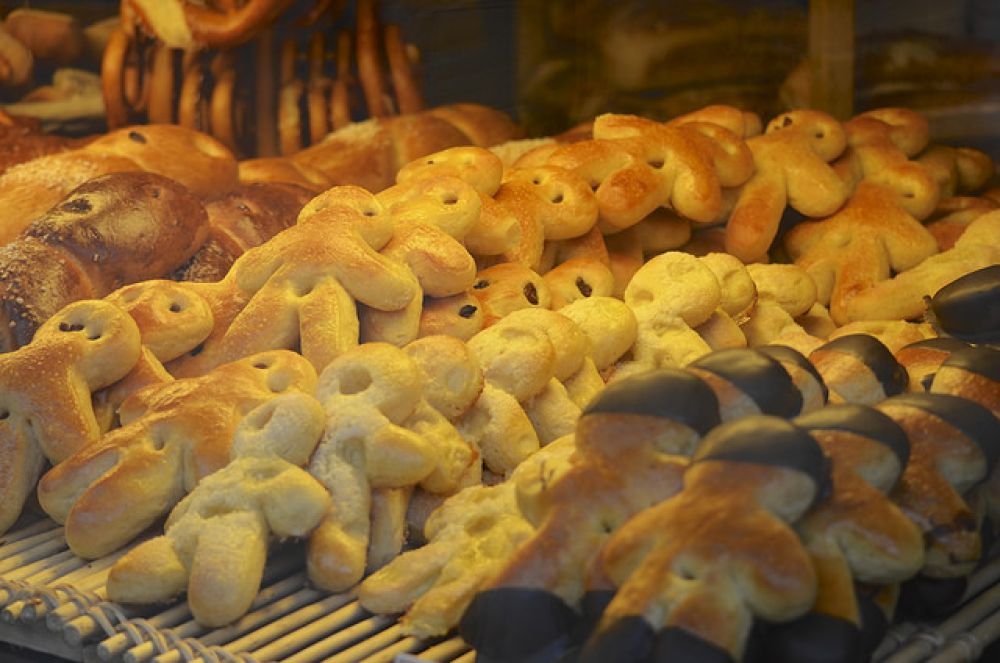
Fine, all butter Brioche, in the shape of a little man, which you can find from the beginning of December and which is often eaten accompanied with tasty hot chocolate…
Traditionally, these manalas were the delight of the family celebration of the feast of St Nicholas (on 6 December).
Berawecka
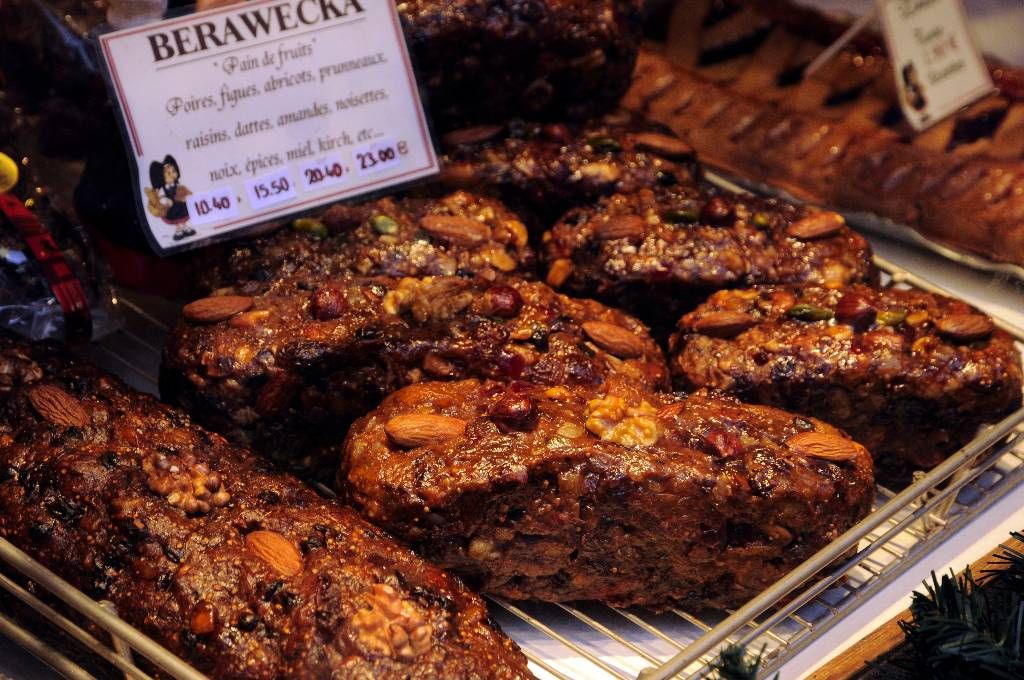
Bread with dried fruits (apples, figs, apricots, prunes, pears, raisins…) macerated in kirsch.
Christstollen
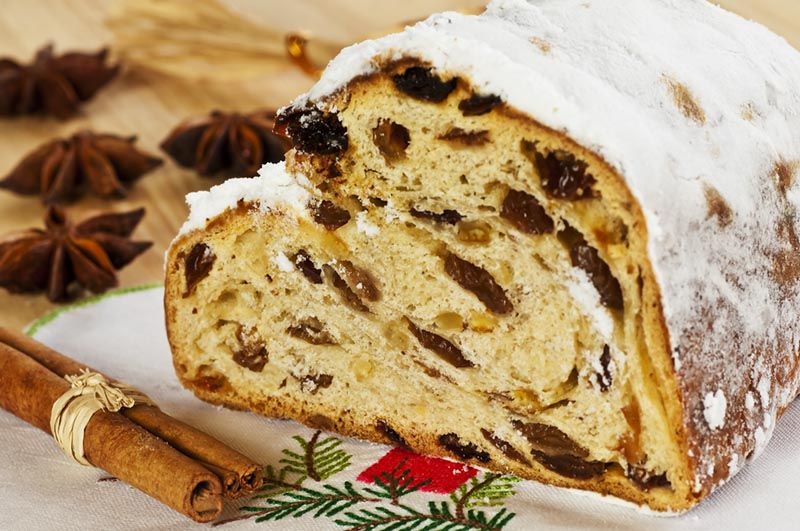
Christmas Brioche with candied fruits and cinnamon, filled with almond cream, in form a bread and covered with icing sugar.



